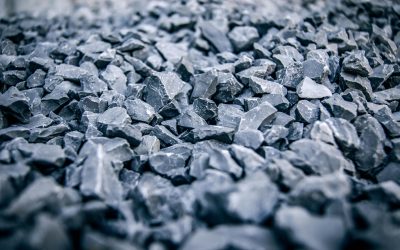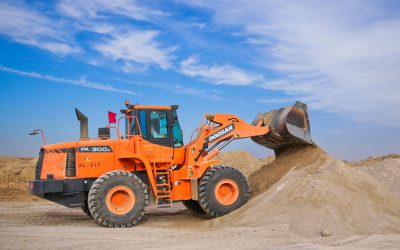Washing aggregate is a crucial step in many material processing operations, helping to remove clay, silt, and other unwanted debris from crushed stone, sand, and gravel. Clean, properly graded materials are essential for producing high-quality concrete, asphalt, and other construction products.
Screw washers, log washers, and the Ortner® each have their own strengths and limitations depending on the material type, end-use, and production goals, and in this article, we’ll compare them to help you determine the best solution for your operation.
Traditional Screw Washers
Screw washers (also known as spiral classifiers or fine material washers) are commonly used in aggregate washing systems to remove clay, silt, and fine particles from sand and gravel.
They consist of a sloped trough with a rotating screw (or auger) inside. As water and material enter the lower end of the trough, the screw pushes the cleaned aggregate uphill, while the dirty water and fines overflow out the back.
Their performance is adequate for basic sand classification and dewatering, but they’re not ideal for processing heavily contaminated or ultra-fine materials, as they may lose finer particles with the overflow water.
Considerations for Screw Washers
Screw washers tend to require regular maintenance due to wear on the screw shaft, flights, and bearings — especially when handling abrasive materials. Grit and debris can accelerate wear, and the submerged components are more susceptible to corrosion and mechanical breakdowns. Over time, these factors can result in higher operating costs due to frequent part replacements and maintenance downtime.
Screw washers use a relatively large amount of water compared to more modern systems, like the Ortner. They rely on constant water flow to separate fines from usable product, and much of this water is lost in the overflow process.
This equipment typically has a moderate to large footprint depending on their capacity. Installation can be relatively straightforward, but they require a reliable water supply and adequate space for water collection and disposal. Additionally, because of their overflow design, settling ponds or additional water management systems are often needed, which adds to the setup complexity.
Log Washers
Log washers are heavy-duty washing machines designed to scrub and remove tough clay, mud, and other contaminants from coarse aggregate (typically over 3/8″). They consist of a long tub with two rotating shafts fitted with paddles or blades that agitate the material aggressively. As the material moves through the washer, the paddles churn and scrub it thoroughly, breaking up stubborn clay and separating debris from the aggregate.
They are commonly used in mining, quarrying, and recycled aggregate operations where basic rinsing isn’t enough. However, they are not ideal for fine materials, as those can be washed away or lost in the process.
Considerations for Log Washers
While their aggressive scrubbing action is effective, it depends on a significant amount of water to move debris out of the washer. Because the system doesn’t reclaim water efficiently, log washers are less water-efficient than systems, like the Ortner, and typically require large settling ponds or water recycling setups to manage runoff.
Related article: Why Mine Dewatering is Essential for Efficient Mining Operations
Log washers are rugged and durable, but they are also mechanically intensive. The rotating shafts, paddles, and gearboxes are all subject to high wear, due to the abrasive nature of the materials being processed. Over time, the cost of replacing paddles and shafts, managing gearbox repairs, and handling corrosion and buildup can add up, making maintenance and operating costs fairly high compared to simpler systems.
Log washers have a large footprint, both due to the physical size of the machine and the support systems needed:
- Water supply and management
- Concrete pads or structural supports
- Settling ponds or water recovery systems
Their installation is more complex, often requiring custom foundations, heavy-duty piping, and additional infrastructure to manage water and slurry discharge.
The Ortner
The Ortner® is an advanced aggregate washing and fines removal system. Unlike traditional washers that rely heavily on water and mechanical action, the Ortner uses a combination of water, gravity, and a rotating dewatering pan to separate fines from usable material. It’s designed to efficiently clean and dewater sand, crushed stone, and other aggregates with:
- Minimal water use
- Lower energy consumption
- Minimal maintenance and downtime
- Lower operating costs
Additionally, the Ortner is ideal for operations with space constraints. It has a smaller footprint than screw or log washers, simple installation with minimal infrastructure requirements, and no need for large settling ponds or extensive water management systems.
If you have any questions about the Ortner, please don’t hesitate to reach out to us.


